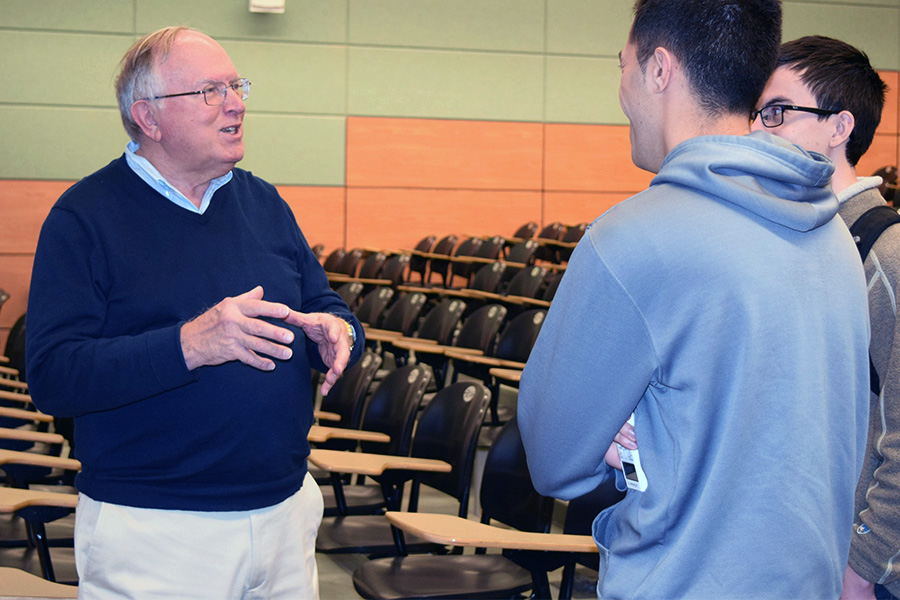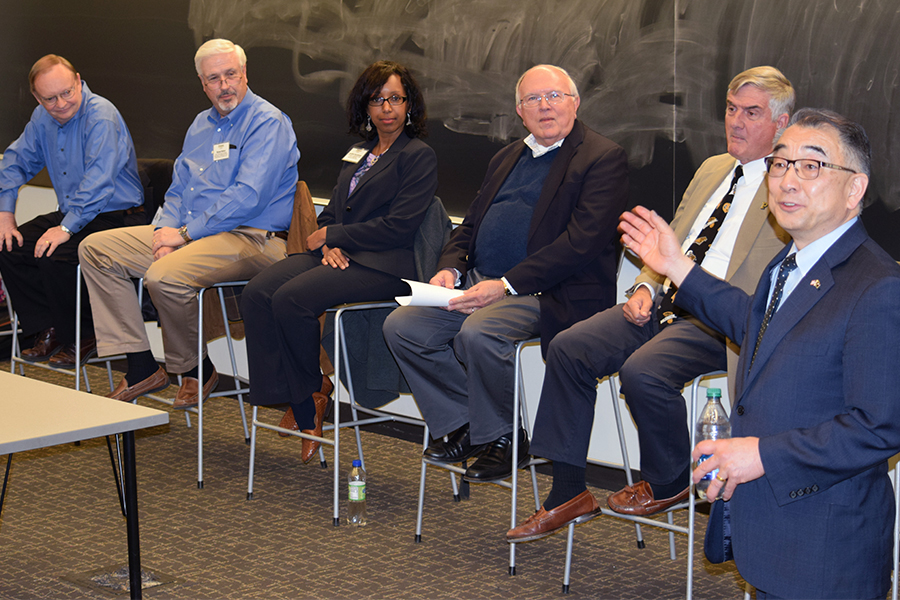Neil Armstrong Distinguished Visiting Fellow Bevilaqua maximizes visit

As part of the inaugural Neil Armstrong Distinguished Visiting Fellow program, AAE alumnus Paul Bevilaqua gave a three-day short course, “Introduction to V/STOL Theory and Practice,” participated in the Industrial Advisory Council’s ethics panel, and met with faculty and students.
Bevilaqua (MSAAE ’68, PhD AAE ’73) spent about two weeks on campus from late March into early April.
“It was a good experience. I enjoyed it,” Bevilaqua says. “I’m a Purdue graduate, and I feel like I ought to be giving back.”
The Neil Armstrong Distinguished Visiting Fellows (NADVF) program brings highly accomplished and recognized scholars and practitioners to the College of Engineering to catalyze collaborations with faculty and students. Fellows are individuals who have been eminently recognized for their impact and achievements in engineering or related disciplines and who collaborate with Purdue Engineering faculty members on research projects and initiatives, including new research directions, industry engagement and on-campus and online educational efforts. Their selections were based on nominations made by faculty and the proposed impact of their research and visit on Purdue Engineering.

“My hopes are to make Purdue better known, to advertise its strengths. There seems to be too much Midwestern modesty along the lines of, ‘Shucks, ma’am, just doing my job,’ ” Bevilaqua says of his involvement in NAVDF. “I also want to help the younger professors get started and help some of the more experienced professors to try something different that will really make an impact so that people will say, ‘Wow, Purdue did that.’ ”
Bevilaqua’s short course gave an overview on Vertical and/or Short Take-Off and Landing (V/STOL) aircraft technologies, design, and performance. He also discussed fundamental concepts and technologies in V/STOL aircraft design.
Bevilaqua, now retired, spent much of his career developing V/STOL aircraft and made key theoretical contributions as well as practical innovations in V/STOL aircraft design. He joined Lockheed Martin as Chief Aeronautical Scientist and became Chief Engineer of the Skunk Works, where he played a leading role in creating the Joint Strike Fighter. He invented the dual cycle propulsion system that made a supersonic V/STOL aircraft practical and suggested that conventional and naval variants of this aircraft could be developed to create a common, affordable aircraft for all three services. He subsequently led the engineering team that demonstrated the feasibility of building this aircraft.
While on campus, Bevilaqua also met with Purdue’s AIAA chapter and spoke to AAE400, Senior Seminar, and AAE 551, Systems Engineering, classes.
“The students seemed to appreciate my talk. They asked some good questions, so they’re thinking,” he says. “Some of them just came up and said, ‘Thank you, I enjoyed it.’ That was nice.”

